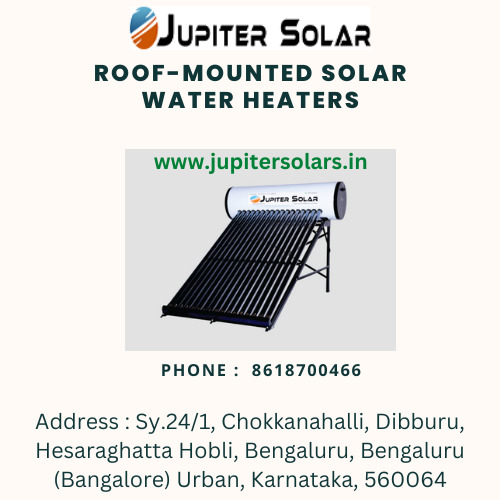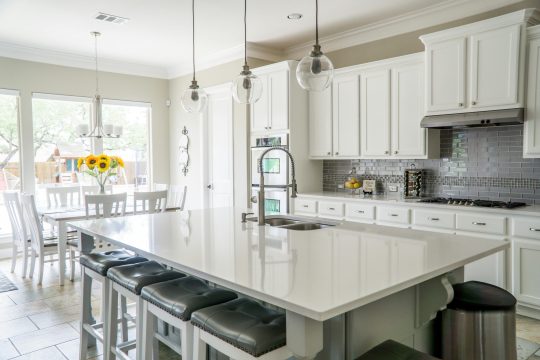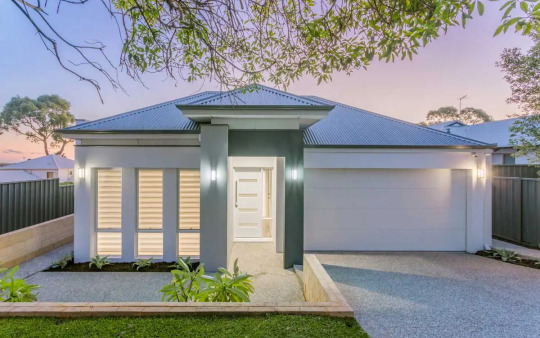#roof solar water heater
Text
Roof-Mounted Solar Water Heaters
Harnessing Solar Energy: Roof-Mounted Solar Water Heaters
In recent years, there has been a surge in interest towards sustainable energy sources, and solar power stands at the forefront of this movement. Among the various solar technologies available, roof-mounted solar water heaters emerge as a practical and eco-friendly solution for homeowners looking to reduce their carbon footprint and save on energy bills. In this comprehensive guide, we'll delve into the workings, benefits, installation process, and maintenance of roof-mounted solar water heaters, empowering you to make an informed decision for your home.
Understanding Roof-Mounted Solar Water Heaters
Roof-mounted solar water heaters utilize sunlight to heat water for residential use. The system typically consists of solar collectors mounted on the roof, a storage tank, and a circulation pump. These collectors absorb sunlight and convert it into heat, which is transferred to the water circulating through them. This heated water is then stored in a tank for later use, such as bathing, laundry, and domestic heating.

Benefits of Installing a Roof-Mounted Solar Water Heater
Investing in a roof-mounted solar water heater offers a myriad of advantages, both environmental and financial. Firstly, it significantly reduces dependence on conventional energy sources, thereby lowering utility bills and mitigating carbon emissions. Additionally, solar water heaters require minimal maintenance and have a long lifespan, providing a reliable and cost-effective solution for years to come. Moreover, installing solar technology enhances the resale value of your home, appealing to eco-conscious buyers and contributing to a greener future. To know about roof-mounted solar water heater, contact Jupiter Solar at www.jupitersolars.in.
Installation Process
The installation of a roof-mounted solar water heater involves several key steps to ensure optimal performance and efficiency. Firstly, a site assessment is conducted to determine the ideal location for solar collectors, considering factors such as sunlight exposure and structural integrity. Once the location is determined, the collectors are securely mounted on the roof, facing southward to maximize sunlight absorption. Next, plumbing connections are made between the collectors and the storage tank, facilitating the circulation of heated water. Finally, the solar heater system is tested to ensure proper functionality and safety measures are in place.
Maintenance and Care
To prolong the lifespan and efficiency of your roof-mounted solar water heater, regular maintenance is essential. This includes inspecting the system for leaks, checking the circulation pump, and cleaning the solar collectors to remove any debris or dirt buildup. Additionally, it's recommended to flush the system annually to remove sediment and ensure optimal performance. By adhering to a maintenance schedule, you can maximize energy savings and enjoy uninterrupted access to hot water.
Conclusion
In conclusion, roof-mounted solar water heaters represent a sustainable and cost-effective solution for residential hot water needs. By harnessing the power of sunlight, these systems offer numerous benefits, including reduced energy bills, minimal environmental impact, and increased property value. With proper installation and maintenance, homeowners can enjoy reliable access to hot water while contributing to a cleaner and greener planet. Invest in a roof-mounted solar water heater today and take a significant step towards a sustainable future.
#solar water heater#solar energy#bangalore#india#solar#solar water heaters#bengaluru#solar water heating#solar heater#water#roof-mounted solar water heater#roof-mounted solar heater#roof solar water heater#roof-mounted heater#solar water heater buy online india#heaters#heating#heat#heater#tumblr#solar industry#industries#solar energy system manufacturer
1 note
·
View note
Text
10 Home Upgrades That Are Worth It!
But you’ve recently purchased a new house, or you’re planning to remodel your current one. You can feel good about investing in your home upgrades. Upgrading areas of your home not only look good, but they can actually improve your quality of life. You need a mix of practical updates that will help you to protect your home and up its value, and fun updates to customize it for your lifestyle.
For…

View On WordPress
#garage door repairs#home improvements#kitchen#outdoor decor#solar panels#storage solutions#sustainable roofing#tankless water heater
0 notes
Text
Portable Pop-Up Changing Room: Convenience On-The-Go
In a fast-paced world where time is of the essence, convenience and practicality have become paramount in our daily lives. Whether we are attending outdoor events, going on weekend getaways, or exploring new places, there's one thing we all need at some point – a private space to change outfits comfortably. This is where the revolutionary Portable Pop-Up Changing Room steps in, offering a solution that redefines convenience on-the-go.
The Birth of a Game-Changer:
The concept of a portable pop-up changing room was born out of the need for privacy and convenience during outdoor activities, particularly in sports and adventure events. The conventional practice of changing behind a towel or struggling to find a discreet spot often left people feeling uncomfortable and exposed. Innovators recognized this gap and set out to create a product that would alleviate this issue.
Design and Functionality:
The Portable Pop-Up Changing Room boasts an ingenious design that takes mere seconds to set up. Made from lightweight yet durable materials, it folds into a compact form for easy transportation. When unfolded, it springs into shape, forming a cozy, private space to change clothes. The structure is typically tall enough to accommodate most individuals comfortably and is enclosed with high-quality, opaque fabric to ensure complete privacy.
Many models come with additional features to enhance functionality. Some include built-in hooks to hang clothes or towels, pockets for storing personal items, and ventilation panels to keep the interior fresh and breathable. Furthermore, the water-resistant materials make it suitable for use in various weather conditions, adding to its versatility.
Versatility Redefined:
The Portable Pop-Up Changing Room is not limited to a single purpose. While it remains a game-changer for outdoor enthusiasts, it has found applications in various domains:
Sports Events: Athletes and sports enthusiasts can now change into their gear or dry off after a workout without worrying about prying eyes. This adds a layer of comfort and convenience, allowing them to focus on their performance.
Beach Days: Sun-soaked days at the beach are even more enjoyable with a pop-up changing room. Families can change in private, and surfers can put on their wetsuits discreetly.
Camping and Hiking: Explorers can embrace the beauty of nature without sacrificing their privacy when it's time to change clothes or freshen up.
Festivals and Concerts: Festival-goers and concert attendees can confidently change into fun and quirky outfits, enhancing their overall experience.
Photography and Film Sets: Models and actors can have a dedicated space to change between shoots, ensuring a seamless and professional production.
Emergency Situations: In disaster relief scenarios or emergency situations, pop-up changing rooms can provide displaced individuals with some privacy and dignity.
Sustainability and Eco-Friendliness:
With sustainability taking center stage, the manufacturers of Portable Pop-Up Changing Rooms have also embraced eco-friendly practices. Many products are now made from recycled materials, and efforts are made to minimize waste during production. Their durability ensures they last for years, reducing the need for frequent replacements and lowering the overall environmental impact.
Conclusion:
The Portable Pop-Up Changing Room has undoubtedly revolutionized the way we change clothes on the go. Its blend of convenience, practicality, and privacy has earned it a special place in various activities and events. From sports enthusiasts and beachgoers to travelers and adventurers, it has become an indispensable companion for those seeking comfort and dignity wherever they go.
#overland#roof top tent Dubai#Roof Top Tent#camping water heater#100 watt portable solar panel#12V Solar Battery charger
1 note
·
View note
Link
A Comprehensive Guide To Passive Solar Water Heaters
Nothing comes close to passive solar water heaters when we talk about eco-friendly warm water solutions, and you can see why that is so.
And the best thing about passive water heating units is that you need not spend a fortune to have one and go green. Not to forget how drastically you can reduce your carbon footprint just by switching over to these.
If you’re looking to install one such heating unit in your home, you can reach out to us. We’ve got the best passive solar water heaters from market leading manufacturers, that too at the most competitive prices.
#Apollo solar roofing system#passive solar heating system#passive solar water heater#eco-friendly products#water heating systems
0 notes
Text









Hello, hyrax family!
These rock hyraxes live on the grounds at the Emakoko Lodge in Nairobi. They look rodent-like, but they are descended from a common ancestor with the elephant, and you can see the resemblance in their toes, and their little tusks (though no tusks are pictured here).
Hyraxes live in groups, eat plants, and retreat to rock crevices or similar places to hide from predators. At the Emakoko, they like to lounge on top of the smaller buildings, soaking up warmth from the solar water heaters. They are roughly rabbit-sized, but sound 100% elephant when they gallop across the roof.
231 notes
·
View notes
Text
The White House had solar panels for 7 years:
On June 20, 1979, the Carter administration installed 32 panels designed to harvest the sun's rays and use them to heat water…[Carter predicted at the dedication ceremony], “A generation from now, this solar heater can either be a curiosity, a museum piece, an example of a road not taken or it can be just a small part of one of the greatest and most exciting adventures ever undertaken by the American people."
By 1986, the Reagan administration had gutted the research and development budgets for renewable energy at the then-fledgling U.S. Department of Energy (DoE) and eliminated tax breaks for the deployment of wind turbines and solar technologies…
And in 1986 the Reagan administration quietly dismantled the White House solar panel installation while resurfacing the roof. "Hey! That system is working. Why don't you keep it?" recalls mechanical engineer Fred Morse, now of Abengoa Solar, who helped install the original solar panels as director of the solar energy program during the Carter years and then watched as they were dismantled during his tenure in the same job under Reagan.
138 notes
·
View notes
Note
What questions do you ask a real estate agent when you're looking into a place? Asking since I want to know what to look for when I am eventually browsing realty sites :)
Well, it depends on the place, really. And I've only bought a house once, but I guess the basics:
Always ask for a Market Analysis of the Property and the Seller's Disclosure agreement. Those will be the best place to start (especially the latter). But, in general:
Age of house
Age of plumbing/electric/AC/furnace/heater/roof/windows
Type of sewage/heating/cooling
What's parking/the garage like (many places in cities won't have parking, if that's something you care about)
Trash/recycling/composting available through city?
If the current owner has performed updates to the property
If there are trees on the property, how old are they, how big will they get, do any impact the roof or gutters?
what direction does the house/driveway face (important for snow/ice reasons depending on location)
If the current owner is aware of any damage or structural issues
If it's part of a duplex/multiple units in one building:
how are each unit's utilities metered for water, gas, and electricity?Can we get a copy of the last year’s utility bills for water, gas, and electric for the unit? Is there an HOA or Party Wall Agreement and how does that work--get a copy of the formal document laying out communication/relationship/arbitration etc. between owners. Is there a history of arbitration that is available or minutes from HOA meetings that are available? How are HOA elections held, how are dues determined and paid, and have there been any special assessments within the last few years?
If there are solar panels:
Are they paid off? Is there proof they're paid off? how is ownership and maintenance of those panels handled and transferred? Are the panels for the entire building or just this unit?
Also just, what's the neighborhood like if you're unfamiliar. Walk around at different types of day. Is it mostly retirees? Young, loud, people? Folks with dogs? Get a feel for the environment.
#house hunting#real estate#feel free to add stuff folks#this isn't my first rodeo#but it is my second#so i still have a lot to learn#im sure
166 notes
·
View notes
Text
tips for adulting #3
if you own your home, do the biggest repairs first
We got the roof fixed this week, finally. Had a slow drip since December. The leak was due to our aging solar hot water system having reached the end of life. The problem is the company that made them doesn't exist any more, nor does the company that installed them. So they had to go.
Getting contractors willing to do the project was a nightmare. I'm not an HGTV personality where I can just call up a buddy and have him do something wacky on TV the next week. It took four months, and weirdly enough it was our regular plumber and roofer working in tandem that ended up doing it. Roof looks great! We even got a brand new state of the art on demand hot water heater to replace the solar hot water system. $7500 and my house is whole again.
There's a lot of little repairs that are now delayed. I need a new range oven. The mailbox is gross and needs to be replaced. I need to resod the lawn. I need new shelving and a new ruck and a lot of other small things here and there.
But fixing your roof is non-negotiable in a house. And upgrading the hot water heater is probably the least sexy home improvement you can do, but DAMN that new water heater looks space age.
Now that the big stuff is done, we can start saving up for a new oven, and not have to worry about the water tank exploding.

#tips for adulting#adulting#home improvement#no seriously the hot water tank is on the IoT and will let us know if there is a leak when we're away
4 notes
·
View notes
Text
Energy-Efficient Building Techniques in Tarneit
In reaction to the global movement towards sustainability, the construction industry in Tarneit, an emerging suburb of Victoria, has been integrated. In particular, house builders Tarneit can incorporate sustainable and efficient methods, materials, and technologies in building construction.
These methods benefit the environment and are also financially sustainable for homeowners as they help cut down costs incurred in the provision of energy. This blog evaluates the various high-quality, energy-efficient building methods defining future housing in Tarneit.
Solar Power Integration
Integrating solar power systems is one of the most significant steps towards energy-efficient building. House builders in Tarneit increasingly embed solar panels and thermal systems in new constructions. Solar panels capture solar energy and directly convert it into electricity.
Solar thermal structures harness sun energy to warm water, which reduces the use of steam on non-renewable power assets. This cuts carbon emissions and hence supports the environment while lowering utility expenses.
Additionally, promoting incentives for solar power in Australia attracts new homeowners to embrace this power source.

Advanced Thermal Insulation
Proper insulation, therefore, plays a significant role in energy conservation, whereby temperatures within homes are well regulated, lowering the chances of using heaters or air conditioners frequently. House builders in Tarneit employ advanced insulation techniques, including foam insulation and high-quality batten insulation.
These materials are installed in the walls, roofs and floors as insulation and resist heat flow in cold and hot seasons. Insulation is crucial for making homes more comfortable by significantly reducing noise levels.
High-Efficiency Windows
Another strategy house builders in Tarneit use is installing energy-efficient windows to enhance home energy performance. Multiple-glazed or triple-glazed windows are made up of several glass panes separated by a gas with very low thermal conductivity.
These windows also play a part in controlling indoor temperatures, preventing the formation of condense and giving better soundproofing.
The frames employed in making these conservatories include fibreglass or composite frames, which are more energy-efficient and long-lasting.
Water-Saving Fixtures
Water performance in buildings is now considered one of the predominant additives of sustainable construction. In today's Tarneit homes, newer and more innovative houses feature energy and water-saving amenities such as low-flow toilets, showerheads, and faucets.
Experienced house builders in Tarneit prefer these fixtures to minimise water usage in daily life while maintaining functionality without achieving high levels of water usage.
By using significantly less water per minute compared to traditional fixtures, they help conserve a critical natural resource and lead to substantial savings on water bills.
The deliberate incorporation of water-efficient technology in homes demonstrates a commitment to environmental stewardship and economic efficiency.
Use of Sustainable Materials
The desire for building materials plays a vital function in the environmental effect of a construction undertaking. House builders in Tarneit use recycled building materials that are not obtained directly from the source and have been recycled first. Some sustainable materials used in construction include recycled steel, glass, re-use wood and bamboo.
Also, paints and adhesives are non-toxic, and sealants are used to reduce the emissions of VOCs, which harm the inhabitants of homes by providing them with good air quality.

Implementation of Smart Home Technology
Smart home technology is crucial today and significantly affects home energy management. Some of the features in houses in Tarneit include intelligent thermostats that control heating and cooling equipment depending on the number of people using the house and the climate.
For instance, LED lighting consumes less energy than traditional lighting; programmable appliances and water heaters also help save energy. These technologies allow owners to screen their power consumption behaviour in detail and, for this reason, be in a function to make rational selections.
Green Roofs and Living Walls
Some innovative house builders in Tarneit are incorporating green roofs and living walls into new constructions. These characteristics provide good thermal performance, minimise the speed and impact of water on buildings, contribute to air quality, and diversify the avian fauna within cities.
A green roof is a vegetative layer covered with vegetation and a growing medium or partially or fully developed plant layer on a waterproofing layer.
Similarly, living walls are part of the building's exterior or interior walls, covered with plants. They enhance a building’s insulation and add aesthetic value to the property.
Optimal Orientation and Layout
This is a fact because the position of a building and its architecture determine how much energy it will consume. Climatically responsive architecture is apparent, where house builders in Melton strategically place numerous windows and doors to maximise natural light and air circulation within the buildings.
Additionally, the structures are oriented in alignment with the direction of the winds and the sun. This approach minimises using artificial lights and mechanical air conditioners, thus saving power.
Such thoughtful placement enhances energy savings and ensures that living spaces maintain a natural comfort throughout the seasons, creating healthier and more sustainable living environments.
Final Takeaway
Thus, the residents of Melton who choose to live in a house constructed with the following features can have a relatively environmentally friendly way of life meeting the ecological requirements of the contemporary world. Various dedicated house builders in Melton are adopting these building practices, paving the way for a future where all newly constructed homes will be as energy-efficient as possible, reflecting a commitment to environmental responsibility and sustainability.
#House Builders Tarneit#Home Builders#home improvement#home improving project#home design#home decor#home#home & lifestyle#interior design
2 notes
·
View notes
Text
We are gonna carpet the front room (it’s on slab so it needs many layers of underlayment so your feet definitely won’t hurt from standing on it like they do now), carpet the bedrooms, and then get our stuff shipped. And piled in the front room. Hopefully it can be tarped for eventual painting all in a big mound like that. THEN everything else can take as long to get lined up as it likes (remove broken interior fireplace, push that wall back to make a bookcase nook bcs this house has bizarre internal voids the plans don’t match & why not use the space, install the flooring after so it doesn’t have to be patched). (Remodel of kitchen because it is 70yo and has cartoon suicide wiring).
Other stuff is outside stuff. Sewer lateral line replacement, French drain lapped around the house before it floats any further away (not a joke), replace old original copper pipes as they are reaching end-of-life, adjust gate for side parking, solar, hvac, move washer and dryer to other side of garage, refurbish garage, new ondemand wallmounted water heater on exterior wall instead of the buckwild badly installed one precariously looming there currently commanding a great deal of space like a tipsy lukewarm trainwreck. Remodel the two bathrooms bcs of extensive water damage and the bathtub that fiberglassed my butt. …I guess that’s an inside thing but it doesn’t have anything to do with anything else and can happen whenever.
Handyman will fix all the doors that don’t open and the nice sliding door’s wheels (unmaintained to the point of nigh unusability). I think the roof is also due for reshingling, would happen along with solar and hvac (currently have roofmounted unit).
House is lovely otherwise. I will need to get, a real job, wow. Since I will only be earning money until August. And mom likely can’t do ALL of this.
I want a quieter fucking bathroom exhaust fan. WHY are they so noisy.
8 notes
·
View notes
Text

WELL GOSH DURNIT WE’RE SHAPIN’ UP.
[Published Journal - Circa 2042]
Things are startin’ to come around out here! It feels good to see some smiles. We’ve recruited a family who were around for Old Domir. They were scientists. They’ve helped jumpstart the industry around here and get the Thermodynamic Submarinals started up. Old Domirian tech will help us get started up, just gotta make sure we do it right or it all could go kaput!
Them T-Subs’ll help us get out on the water and not freeze up or run into any more ice. On top of that, now we got lakes and rivers runnin’ and the SubFilters can get to work gettin’ us some clean h2o! Exciting.
That’s it for right now. More later.
- Dal
[Published Journal - Circa 2043]
T-Subs done blew up.
Sounds worse than it is, we can fix it fine, but the cold set us back a bit after they went. Bad batch of rubber washers were corroded by the fuel. Oh well, now we know.
Base Maliat went down for a few days and some of the folks had to take a caravan to Calium. They made it there okay, thank the winds.
On to the good news! After the T-Subs were restored, we got out on the water and established some routes to the other coastlines. We prepared some more T-Subs to deploy to keep the water on the coasts from freezing over, so we have those on reserve.
And the big one: Solar Power BABY. Solar Powered T-Subs mean no more fuel to refine, meaning no more tapping into the mountains. More people above ground means a happier people! We don’t have the medical team to care for those who inhaled the fumes, so we’re a better nation for that bit of progress. It’ll change a lot.
That also means that Thermodynamic Heaters can be placed on land now, all powered by the sun. We got farms with fake sun being powered by T-Gens (what the teams have been calling land-bound Thermodynamic Generators) which are being powered by the REAL sun.
Boy howdy we’re damn near modern. Stay tuned, buddy stay tuned! Till next time.
- Dal
[Published Journal - Circa 2052]
Okay, so how was the King’s Company this last year? Well, they finished the opening of 2 new Engineering Academies on the coast, Mallard North and Mallard South. The University at Calium saw more attendance than it ever has, and the top engineers are making breakthroughs after the Domirian Architects have helped restore old tech.
So.. good on that front. Safe to say that Maya won’t have nothin’ to worry about when Elisia graduates.
The walls are still under construction and the King’s own have finished carving a series of underground bunkers and tunnels for the cold snaps.
Speaking of cold snaps, it’s been 3 years since a cold snap brought a farm down. They’ve stayed up and strong and sometimes we can even turn the T-Gens off and open the roof! The cold has been breakin’ here and there.
Things are looking good now. I wish he was here to see it. But he’s not and I am.. So I’ll see it for him. I wish I could thank him or something.
2 notes
·
View notes
Text
Solar Water Heater: Nearby
Introduction
As the world shifts towards a more sustainable future, the importance of renewable energy sources cannot be overstated. One such source is solar energy, which has been gaining popularity in recent years. Among the various applications of solar energy, solar water heaters have emerged as a viable option for households. In this article, we will delve into the technical aspects of solar water heaters, focusing on the Jupiter Solar brand, and explore the benefits of this eco-friendly solution.
What is a Solar Water Heater?
A solar water heater is a device that uses solar energy to heat water for various household applications, such as bathing, washing, and cleaning. The system consists of a solar collector, a storage tank, and a heat exchanger. The solar collector is responsible for absorbing solar radiation and converting it into heat, which is then transferred to the storage tank. The heat exchanger ensures that the hot water is distributed to the desired location.
Solar Water Heater Nearby
How Does a Solar Water Heater Work?
The process of a solar water heater is relatively simple:
Solar Radiation: Solar radiation is absorbed by the solar collector, which is typically mounted on the roof or a wall.
Heat Transfer: The absorbed solar radiation is transferred to a fluid, usually a mixture of water and antifreeze, which is pumped through the solar collector.
Heat Storage: The heated fluid is stored in a tank, where it is kept warm by insulation.
Heat Distribution: The hot water is distributed to the desired location through a network of pipes.
Benefits of Solar Water Heaters
Solar water heaters offer numerous benefits, including:
Renewable Energy Source: Solar energy is a renewable source of energy, reducing dependence on fossil fuels and minimizing carbon emissions.
Energy Savings: Solar water heaters can reduce energy consumption by up to 80%, resulting in significant cost savings.
Low Maintenance: Solar water heaters require minimal maintenance, as they have few moving parts and are resistant to corrosion.
Long Lifespan: Solar water heaters can last up to 20 years or more, making them a long-term investment.
Government Incentives: Many governments offer incentives and rebates for installing solar water heaters, making them an attractive option.
Solar Water Heater Nearby Bangalore
Jupiter Solar: A Leading Brand in Solar Water Heaters
Jupiter Solar is a renowned brand in the solar water heater industry, known for its high-quality products and innovative technology. Their solar water heaters are designed to provide efficient and reliable performance, with features such as:
High-Efficiency Collectors: Jupiter Solar's collectors are designed to maximize energy absorption, ensuring optimal performance.
Advanced Insulation: Their storage tanks are equipped with advanced insulation, reducing heat loss and maintaining optimal temperatures.
Smart Controls: Jupiter Solar's systems come with smart controls, allowing for easy monitoring and adjustment of the system. Take the First Step Towards a Sustainable Future
Contact Jupiter Solar +91 9364896193, +91 9364896194 Today to Learn More About Our Solar Water Heaters and Schedule a Consultation!

Technical Specifications
Here are some technical specifications of solar water heaters:
Collector Efficiency: Up to 90%
Storage Tank Capacity: 100-500 liters
Heat Exchanger Material: Copper or stainless steel
Insulation Material: Polyurethane foam or fiberglass
System Guarantee: 10-20 years
What is the ideal location for installing a solar water heater?
The ideal location for installing a solar water heater is a spot that receives direct sunlight for most of the day, such as a south-facing roof or a wall.
How long does it take to install a solar water heater?
The installation process typically takes 1-3 days, depending on the complexity of the system and the number of installers.
Can I install a solar water heater myself?
While it is possible to install a solar water heater yourself, it is recommended to hire a professional installer to ensure proper installation and ensure the system functions efficiently.
How much does a solar water heater cost?
The cost of a solar water heater varies depending on the size and complexity of the system, but on average, it can range from $3,000 to $10,000.
Are solar water heaters suitable for all types of homes?
Solar water heaters are suitable for most types of homes, but they may not be suitable for homes with limited roof space or those that receive limited sunlight.
Can I use a solar water heater with a conventional water heater?
Yes, solar water heaters can be used in conjunction with a conventional water heater to provide additional hot water during peak demand periods.
How do I maintain my solar water heater?
Regular maintenance is essential to ensure the system functions efficiently. This includes cleaning the solar collector, checking the fluid levels, and inspecting the system for any signs of damage or wear.
Can I use a solar water heater with a pool?
Yes, solar water heaters can be used to heat pool water, but it requires a specialized system designed specifically for pool heating.
Can I use a solar water heater with a hot tub?
Yes, solar water heaters can be used to heat hot tub water, but it requires a specialized system designed specifically for hot tub heating.
Can I use a solar water heater with a radiant floor heating system? Yes, solar water heaters can be used to heat water for radiant floor heating systems, but it requires a specialized system designed specifically for radiant floor heating.
Conclusion
Solar water heaters are a sustainable and cost-effective solution for households, offering numerous benefits and a long lifespan. Jupiter Solar is a leading brand in the industry, known for its high-quality products and innovative technology. By understanding the technical aspects of solar water heaters, homeowners can make an informed decision about installing this eco-friendly solution. With the right system and proper maintenance, solar water heaters can provide years of reliable performance, reducing energy consumption and carbon emissions.
#solar water heater#solar energy#bangalore#solar#solar water heaters#india#bengaluru#solar water heating#solar heater#solar power#water#hot water#solar panel#heaters#water heater#heater repair#heater installation#solar system#solar heaters#industry#renewableenergy#renewable power#renewable resources#heater#heat#heating#water heaters#SolarWaterHeater#RenewableEnergy#SustainableLiving
2 notes
·
View notes
Text
Post-hurricane wrap-up:
High-five to past me for eating the scallops so they didn’t go to waste when the power went out. I would in fact have been super-mad about it, because I was pretty mad about having to toss the cheap-shit frozen vegetables.
Also high-five to past me for getting on the roof the day before it hit and making sure the huge motherfucking downed limb I’ve got in the back yard didn’t take anything off the house when it went.
Cooking the bacon was a great idea, not only because I’d have been mad if I’d had to throw it away yesterday but also because the neighbors spent Thursday grilling everything that would otherwise spoil and bacon is an A+ consolation prize for not getting to eat a burger after smelling them cook all afternoon.
Neighbors spent all Thursday blasting reggaeton because nothing matters.
The water heater actually retained heat for a full 24 hours, and I was able to take a warm shower a day after losing power.
The temperature dip you usually see after a hurricane rolls through has lasted longer than usual, which was much appreciated. It was actually cold in the attic this morning when I got up there to do one last check on the interior vents and remove some of the drip pans.
I’m still eating the stuff I baked before the lights went out, because all the stuff in the fridge had to get chucked, so well done, me.
The propane camping stove will definitely need to be a model with a wind shield. Even in the lee of the house, the crossbreeze from the hurricane’s trailing bands was pretty stiff until about the 24-hour mark.
So far as I’ve been able to tell, only one thing so much as budged from where I put it to keep it from blowing all over the neighborhood, so again, well done, me.
Almost forgot about the pint of consolation ice cream. Wound up eating it at one in the morning, soft but still solid, and reading Dracula Daily by the light of a solar lantern.
Fuck twitter and facebook sideways for their “login to keep reading” bullshit, because guess where every single pertinent and useful announcement about boil water notices, curfews, supply pick-up centers, power restoration, etc. from the county and city governments’ emergency operations departments is getting made? (:
Also I had to hit Home Depot yesterday for something, and all their Halloween shit is up, including a lot of life-size lawn decorations like zombies and scarecrows. Since a plurality of the people in a Home Depot after four days in a hurricane zone look like they’ve spent four days in a hurricane zone and none of us have been sleeping, I just about jumped out of my fucking skin when two of the ‘lawn decorations’ standing next to the zombie turned around and shuffled off to the self-checkout line.
10 notes
·
View notes
Text
BIPV Market: Trends Supplement Large-Scale Solar Systems Adoption
As per the International Energy Outlook, the global power demand is expected to rise by 80%, requiring an investment of around $19.7 trillion by 2040. Also, the Paris Agreement set a target of limiting global warming temperature below 2° Celsius, preferably 1.5° Celsius. This has influenced governments to seek innovative ways to reduce emissions while meeting energy demand, which has paved the way for photovoltaic materials in buildings. Triton’s analysis estimates that the global building integrated photovoltaics market will propel at a CAGR of 17.31% during the forecast period 2023-2030.
Building integrated photovoltaics serves the dual purpose of being the outer layer of a building and a power generator. This, in turn, has opened a new frontier in green infrastructure, influencing architects to develop energy-efficient and aesthetically appealing buildings. For instance, Ubiquitous Energy’s transparent solar window panels, UE Power, have emerged as an aesthetically appealing power-generating alternative to conventional windows.
BIPV Revolution: Trends Reshape Energy Landscape
According to the International Renewable Energy Agency (IRENA) , around 90% of the world’s power can be generated with renewable energy by 2050. Since buildings consume high amounts of energy, BIPV integration will facilitate their transition from energy users to producers. On that note, the notable trends reshaping the market are:
Governments perceive investing in green energy solutions as an opportunity to attain GHG reduction targets. Hence, over the past few years, authorities worldwide have employed various measures to stimulate the adoption of sustainable technologies, including BIPV modules, across residential, commercial, and industrial sectors. For example:
As per the Indian Ministry of New & Renewable Energy (MNRE) , the government has implemented the production-linked incentive (PLI) scheme for high-efficiency solar PV modules with an outlay of INR 24,000 crore, to achieve domestic manufacturing capacity of solar PV cells and modules.
In 2021, the German government amended the Renewable Energy Act by establishing grid priority to drive the onshore wind, solar PV, and biogas growth. The government proposed to increase its solar capacity installations to 100 GW by 2030.
The Chinese government also formulated a policy that requires all new buildings to conform to energy guidelines modeled after LEED specifications. This policy combines a recent initiative to reconstruct 50% of residential high-rise buildings. The country is anticipated to add more than 600 GW of solar power by 2030.
Reaping the benefits from such incentives, the industrial sector leads the BIPV market at 39.54%. However, over the forecast period 2023-2030, the commercial sector is expected to witness the fastest growth at 17.38%.
As per IEA, the global solar PV generation reached around 821 TWh in 2020, a whopping 23% increase from 2019. The energy association also stated that next to utility-scale deployment, distributed applications on buildings contribute to around 40% of PV use globally. In this regard, rooftop-based applications are alleviating the burden on the distribution grids, enabling companies and households to pay lesser energy bills while reducing emissions. Moreover, the cost of installing rooftop PV systems reached around $1 per watt. Hence, roofing captures the majority of the market share at 55.69% in terms of application.
China drives the global market, followed by the US, European nations, and Japan playing a major role. The rise in installations from around 19.4 GW in 2017 to 27.3 GW in 2021 was the key aspect that made China a leader in rooftop installations. For instance, Shanghai and Dezhou have acquired the title of ‘Solar City’, which features a large fleet of rooftop solar water heaters. Besides, the Net Zero Energy Building mandate across China is expected to accelerate the PV roofing segment, with solar tiles gaining major traction. Hence, these developments are expected to widen the scope of the Asia-Pacific BIPV market over the forecast period 2023-2030.
IEA projects that photovoltaic systems are estimated to account for approximately 14% of the total power generation by 2050, owing to the rising detrimental impact of fossil fuels. In fact, the organization stated that PV systems saved more than 860 million tons of C02 in 2020. The construction industry is highly innovative in the commercial sector owing to the development of cost-effective zero-emission green facilities.
As per IRENA, Germany ranks fourth in solar energy production globally. In 2021, the nation installed solar capacities of almost 60 GW, an increase of 5.3 GW from 2020. These actions are based on the country’s aim to obtain a 65% share of the renewable energy sector by 2030. Moreover, the Energy Efficiency Strategy for Building suggested advanced technology development to achieve the goal of a virtually climate-neutral building stock by 2050. Hence, the growing focus on sustainable energy sources fuels the overall Europe BIPV market, spearheaded mainly by Germany.
PV Cost Reduction: A Driving Force for Market Players
Since photovoltaic systems generate energy with around 42% efficiency using multi-junction cells, they have emerged as an ideal alternative over complex installations, such as wind turbines. As per the UN, between 2010 to 2020, the cost of power from solar systems plummeted by around 85%. This highlights the question:
What induced PV cost reduction?
The significant cost decline is mainly because of overproduction and higher investment in PV modules. Another factor is the efforts by Chinese suppliers and wholesalers to reduce the stock held in European warehouses to prevent anti-dumping and anti-subsidy tariffs. This oversupply, from China to Europe thus shrunk the cost of silicon. Such developments led energy solutions supplier Sungrow to supply products to the world’s largest BIPV plant (120 MW) in Central China’s Jiangxi Province. Therefore, the increasing efficiency, ease of installation, and decreasing cost of PV modules over conventional sources like coal and natural gas are expected to open new avenues for players in the building integrated photovoltaics market.
#building integrated photovoltaics market#bipv market#bipv#energy industry#power industry#market research report#market research reports#triton market research
2 notes
·
View notes
Link
5 Benefits Of Installing A Solar Water Heater In Your Home
You see, a solar water heater is a totally worthwhile investment for your home.
Just as solar lighting illuminates your property for free, solar water heating systems offer free warm water throughout the year.
The best thing you can do is compliment your green roofing, that is, solar, metal, or eco-shake roofing, with a solar water heating system.
As such, you can make your home completely energy independent and save big on electricity expenses.
If you are looking for such green housing solutions, do reach out to us.
We do everything from getting you an existing home to building you a new home to installing an Accessory Dwelling Unit on your property.
#Apollo solar roofing system#solar roofing#sustainable building materials#passive solar water heaters#eco-friendly products#eco-friendly building materials#scalloped metal roofing#eco-shake roofing#green roofing
0 notes
Text
Building the Perfect Greenhouse: A Guide for Greenhouse Builders
Choosing the Right Location
The location of your greenhouse is crucial. The ideal site will maximize sunlight exposure, minimize shading, and be sheltered from strong winds. In the Northern Hemisphere, south-facing greenhouses receive the most sunlight, especially during the winter months when daylight hours are shorter. Avoid placing your greenhouse near tall buildings, trees, or any structure that might cast shadows. Additionally, access to water, electricity, and drainage should be part of the planning phase to ensure your greenhouse runs efficiently.
Selecting the Right Frame Material
The frame of the greenhouse is the structure that supports the entire building, so choosing the right material is essential. greenhouse builders Greenhouse builders typically opt for one of three main materials: wood, aluminum, or galvanized steel.
Wood is an attractive option for smaller, hobby greenhouses. It has a natural aesthetic appeal and can blend well into a garden. However, it requires regular maintenance to prevent rot and insect infestation.
Aluminum is a popular choice due to its lightweight nature and resistance to rust. It requires less maintenance compared to wood and offers excellent durability.
Galvanized Steel is often used for larger, commercial greenhouses because of its strength and longevity. Though heavier than aluminum, it provides a sturdy frame that can withstand harsh weather conditions.
Choosing the Right Glazing
Glazing refers to the covering material used for the walls and roof of the greenhouse, which is essential for regulating light and temperature inside. Greenhouse builders typically choose between glass, polycarbonate, or polyethylene film.
Glass is a traditional option that provides excellent light transmission and a classic look. However, it can be expensive and fragile, making it less suitable for areas prone to hail or strong winds.
Polycarbonate is a popular modern alternative. It’s lightweight, durable, and offers better insulation than glass, making it more energy-efficient. It also comes in single, double, or triple layers, providing various levels of thermal protection.
Polyethylene Film is a budget-friendly option commonly used in commercial and temporary greenhouses. While not as durable as glass or polycarbonate, it’s affordable and easy to replace if damaged.
Ventilation and Temperature Control
Effective ventilation and temperature regulation are critical in maintaining a healthy growing environment inside the greenhouse. Greenhouse builders should consider installing both manual and automatic ventilation systems.
Roof vents and side vents allow hot air to escape during the summer, preventing the greenhouse from overheating. For optimal temperature control, automatic vent openers that react to temperature changes can be installed.
Heating Systems are also essential for cold climates. Depending on the size of the greenhouse and the local climate, you might choose between electric heaters, gas heaters, or even passive solar heating systems.
Foundation and Flooring Options
A solid foundation is vital to ensure your greenhouse remains stable and protected from moisture. Many builders opt for a concrete or brick foundation, which provides excellent durability and stability. However, if you're building a smaller or temporary greenhouse, a wooden or gravel foundation can also be effective.
For flooring, greenhouse builders often choose materials that promote good drainage. Gravel, concrete, or even specialized greenhouse tiles allow for proper water runoff, preventing mold and mildew from developing.
Sustainability Considerations
Sustainability is becoming increasingly important in greenhouse building. Many modern greenhouse builders are incorporating eco-friendly materials and technologies. polytunnel australia For example, rainwater harvesting systems, solar panels, and energy-efficient insulation can reduce the environmental impact and operational costs of the greenhouse. By choosing sustainable materials and systems, greenhouse builders can create structures that are both efficient and environmentally friendly.

0 notes